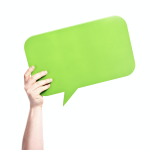They’re not reading; write for skimmers instead

Why skimmable web content? |
|
 |
They don’t; so make webpages scannable How do people read online? They don’t read; they skim. So write skimmable web copy. |
|
|
|
 |
Skimmable text boosts web usability by 47% Increases understanding, memory, satisfaction Scannable text outperformed dense webpages in one of the earliest studies on web writing, by Jakob Nielsen. |
|
|
|
 |
‘Readers’ are skimming and scanning online Web visitors spend only a few seconds on a webpage How long is too long? Web visits peak at two to three seconds. At that point, visitors decide that one-quarter of web pages aren’t for them. |
|
|
|
|
Eye tracking online shows where people look Change how your reader sees your page with 6 eye gaze patterns Readers skim the surface of your page: But you can get them to read deeper with a few smart moves. |
|
|
|
|
 |
People are skimming text on tablets Insights from Poynter’s EyeTrack study Tablet tasks: People reading news on an iPad spend about 78 seconds on stories they don’t finish. Give readers a reason to stay. |
Make web pages skimmable |
|
 |
Make webpages scannable with microcontent How to write web headlines, links, more Web headlines, decks, subheads, bulleted lists and links help readers get the gist of your message without reading paragraphs. |
More on scannable web copy |
|
 |
Resources on importance of skimming and scanning Websites, books & tools The research is in: People skim and scan webpages. They don’t read them. |
|
|
|
 |
Quotes on skimming, scanning, reading What writers & others say “The dirtiest four-letter word in the English language: ‘read.’” — Evelyn Wood Reading Dynamics website |